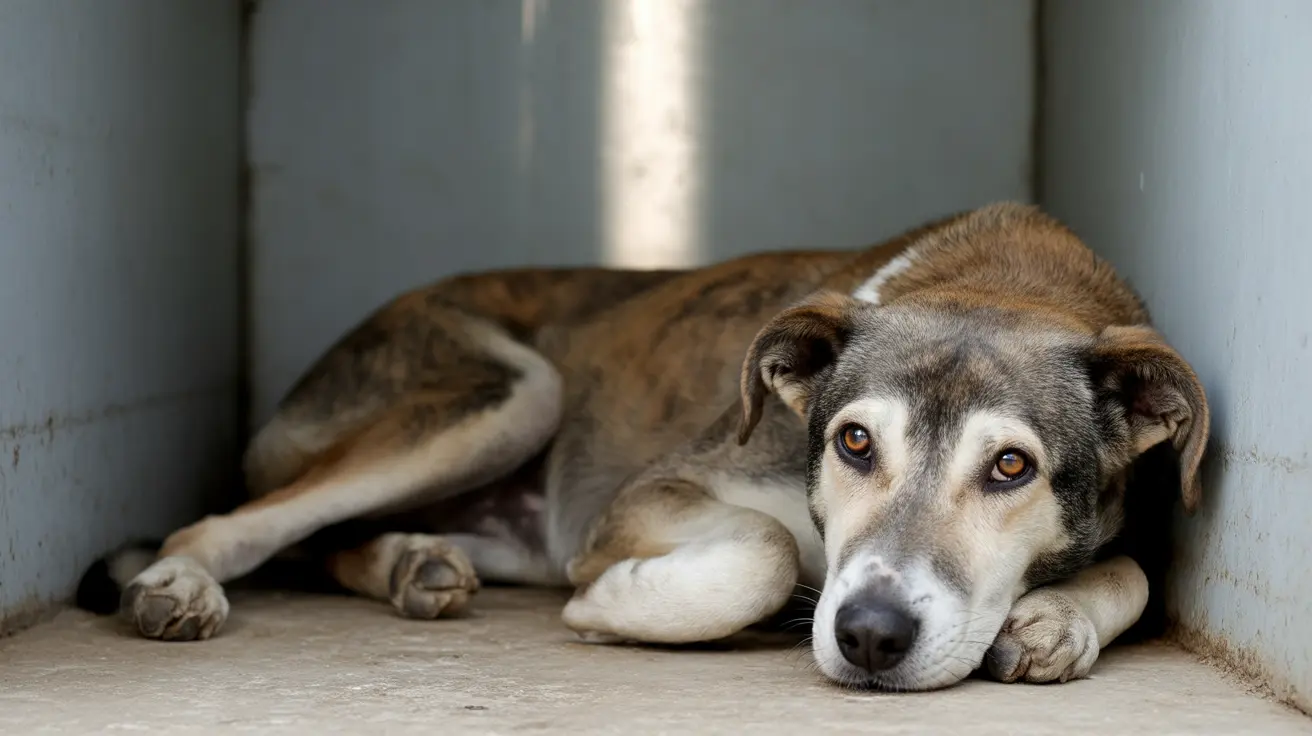When your dog experiences chronic vomiting and digestive issues, pyloric stenosis could be the underlying cause. This serious condition affects the pylorus - the passage between your dog's stomach and small intestine - making it difficult for food to pass through normally. Whether present from birth or developed later in life, understanding this condition is crucial for early detection and proper treatment.
As a pet owner, recognizing the signs of pyloric stenosis early can make a significant difference in your dog's prognosis. This comprehensive guide will explore everything you need to know about this challenging condition, from its causes and symptoms to available treatment options.
What is Pyloric Stenosis?
Pyloric stenosis occurs when the pyloric canal becomes narrowed or constricted, preventing normal food passage from the stomach to the small intestine. This condition can be either congenital (present at birth) or acquired later in life. The narrowing is typically caused by thickening of the pyloric muscles or surrounding tissue, creating an obstruction that disrupts normal digestion.
Common Symptoms and Warning Signs
The most notable symptom of pyloric stenosis in dogs is persistent vomiting, particularly several hours after eating. Other common signs include:
- Chronic regurgitation shortly after meals
- Progressive weight loss
- Decreased appetite
- Lethargy and weakness
- Abdominal discomfort or bloating
- Dehydration
Risk Factors and Breed Predisposition
Certain dog breeds are more susceptible to developing pyloric stenosis. Brachycephalic breeds like Boston Terriers, Boxers, and Bulldogs are particularly prone to the congenital form. Small breeds such as Lhasa Apsos, Shih Tzus, and Maltese tend to develop the acquired form more frequently. Male dogs generally have a higher risk of developing this condition compared to females.
Diagnosis Process
Veterinarians use several diagnostic tools to confirm pyloric stenosis:
- Physical examination and medical history review
- Contrast radiography (X-rays with barium)
- Ultrasound imaging
- Endoscopic examination
- Blood tests to check for related complications
Treatment Approaches
Treatment for pyloric stenosis typically involves either surgical intervention or medical management, depending on the severity and underlying cause:
Surgical Options
- Pyloromyotomy (cutting the pyloric muscle)
- Pyloroplasty (restructuring the pyloric canal)
- Y-U plasty procedure
Medical Management
- Dietary modifications
- Medication for gastric motility
- Anti-nausea medications
- Fluid therapy for dehydration
Prevention and Long-term Care
While congenital pyloric stenosis cannot be prevented, proper management can help control symptoms and improve quality of life. Regular veterinary check-ups, appropriate diet management, and careful monitoring of symptoms are essential for long-term success.
Frequently Asked Questions
What are the common signs of pyloric stenosis in dogs, and how can I recognize them?
The most common signs include chronic vomiting (especially several hours after eating), weight loss, decreased appetite, and lethargy. You may also notice your dog regurgitating food shortly after meals and showing signs of abdominal discomfort.
Can pyloric stenosis in dogs be treated without surgery, and what are the medical management options?
While some mild cases can be managed medically with special diets, prokinetic medications, and acid suppressants, severe cases typically require surgical intervention for the best outcome. Medical management alone may not be sufficient for long-term relief.
Why do some dog breeds, like Boston Terriers and Poodles, have a higher risk of developing pyloric stenosis?
Certain breeds have genetic predispositions to muscle development abnormalities or structural issues in the digestive tract. Brachycephalic breeds are prone to congenital forms, while small breeds tend to develop acquired forms due to their anatomy and genetic factors.
How is pyloric stenosis diagnosed in dogs, and what diagnostic tests are typically used?
Diagnosis typically involves a combination of physical examination, contrast radiography (X-rays with barium), ultrasound imaging, and sometimes endoscopy. Blood tests may also be performed to assess overall health and check for complications.
What is the prognosis for dogs with pyloric stenosis, and how can I ensure the best long-term care for my affected dog?
The prognosis varies depending on the severity and timing of treatment. Dogs that receive appropriate surgical intervention often have excellent outcomes. Long-term success requires following veterinary recommendations, maintaining proper diet management, and attending regular check-ups.






